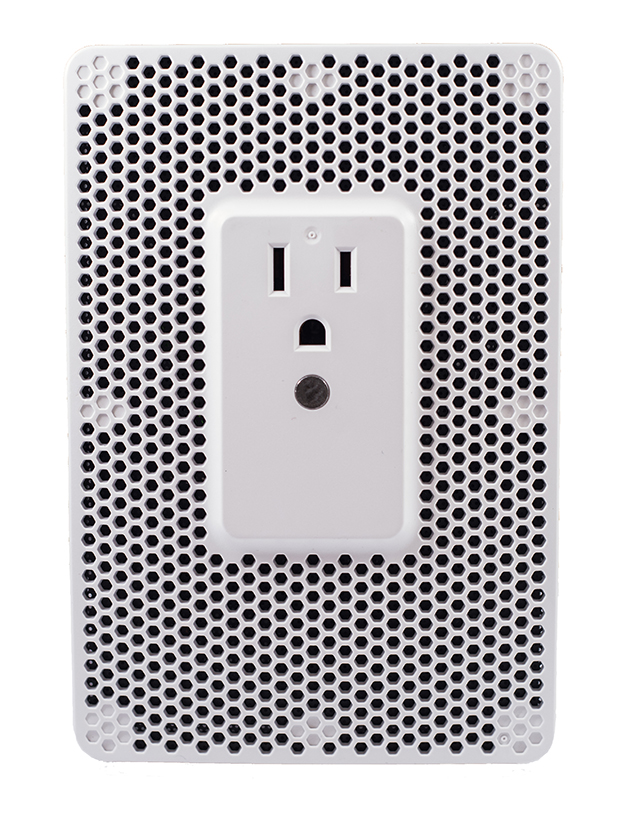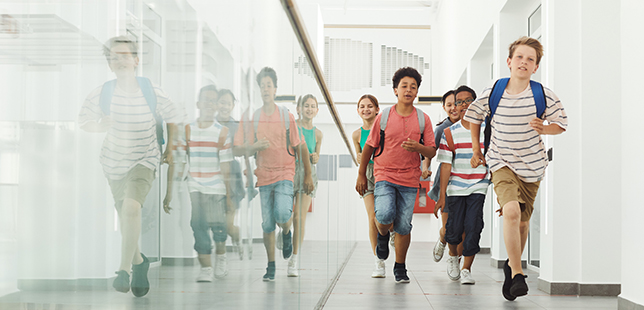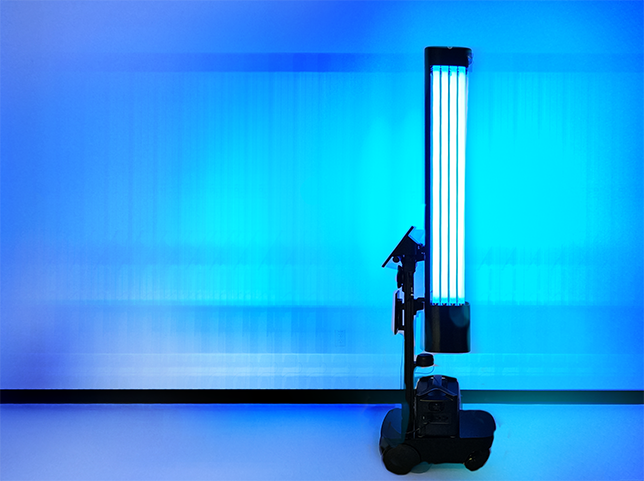Furniture manufacturer Kimball International recently announced the launch of its “Creating Places to Belong” initiative with the goal of making employees feel valued and connected to their workplace, according to a news release.

Sensor solutions company FreshAir recently announced the launch of the FreshAir1 Smoking Detection System, according to a news release. The technology monitors for and detects tobacco and marijuana smoke, and it is geared toward use in school and university buildings.

The importance of HVAC units in schools was brought to the forefront when the COVID-19 pandemic struck in the early parts of 2020. While vaccines became one option for combating the virus, the need for increased ventilation and filtration became an area of focus for many school districts.

Our guest today is Bob Dillon, a school designer and consultant with STS Education. He's here to talk about the importance of student wellness during the learning day, from the time students arrive at the bus stop to the final bell.
CloroxPro recently announced that it has launched an online learning platform to help educate and train commercial cleaning professionals. CloroxPro HealthyClean is intended to help boost the knowledge and skills of cleaning and maintenance staff as these workers’ responsibilities have skyrocketed during the last two years.

Robotics company OhmniLabs recently debuted an autonomous cleaning robot that uses UV-C light to disinfect spaces. OhmniClean is capable of disinfecting a 3,000-square-foot space in less than 15 minutes and was designed for use in schools, hospitals, hotels and other spaces that require deep cleaning of high-touch surfaces.
Several North Texas school districts cancelled school on both ends of the long Martin Luther King Jr. Day weekend, citing staff shortages and a surge in COVID-19 cases.

Today, college students are experiencing tremendous pressure and stress caused by an ever-broadening range of influences and factors, negatively impacting many aspects of social development, learning, and overall well-being.
Shortly, the campus of the University of Alabama will sport a set of small, greenhouse-like structures where students can have private, socially-distanced space for their studies or relaxation.

Saint Francis University in Loretto, Penn., recently debuted a sensory room as space for students with neurodiverse sensory needs. A news release calls Saint Francis one of a “handful of universities” in the U.S. with a specifically dedicated such space.

Disinfection techniques that help make classrooms safe for students, teachers and staff are still top of mind. Here to discuss some of the benefits of ultraviolet light disinfection are Bruce Ramsay, Brand Manager for Visioneering, and Tim Stevens, Director of Product Management for Certolux. We’ll touch on some facts and myths about UV light, the role of UV light in maintaining clean education spaces, the challenges that education professionals should be aware of when purchasing UV light technology, and the technology’s benefits for end users in educational facilities. This episode of Schools in Focus is sponsored by Viscor, a Leviton company.

The widespread use of hand sanitizing stations requires educational institutions to keep a bulk supply of hand sanitizing fluid on hand. And finding a location on campus to keep gallons of hand sanitizing fluid has proved to be a logistical challenge from a fire and life safety inspections perspective.

This episode’s guests are Elizabeth Bonner, design director for education and hard surface, and David Dembowitz, senior vice president of sales North America, both with Mohawk Group. We’ll discuss choosing the right flooring solutions and the impact it can have on creating healthier, worry-free spaces throughout the lifecycle of the installation. We’ll touch on topics like creating productive spaces for students & staff, the impact of COVID-19 on cleanliness standards, choosing the right flooring solution, and how to navigate the flooring decision making process. This episode is sponsored by Mohawk Group.
A 16-year-old student at Laramie High School in Laramie, Wyo., was arrested and led away from her school in handcuffs on Thursday, Oct. 7. Junior Grace Smith said in an interview that she was arrested for trespassing after receiving a suspension for refusing to follow the school’s mask mandate and then refusing to leave school grounds.
A $1.4 million HVAC upgrade at Missouri's East Central College, paid for by federal COVID-relief funds, is expected to mitigate the transmission of viruses in several campus buildings. The work was performed by Johnson Controls as part of its "OpenBlue" healthy buildings program.
The North Bend School District in North Bend, Ore., recently announced that it has chosen Alen as its provider of indoor air quality solutions.
The Meriwether County School District in Greenville, Ga., announced this week that its school board has voted to install disinfection devices on buses.

Today's guest is Sue Ann Highland. Currently, she's the National Education Strategist for School Specialty, but previously, she served as an educator for more than 25 years as a school and district administrator, a curriculum director, teacher, and more. She's here to talk about how dynamic learning environments can help keep students active and engaged. We'll talk about the six instructional elements that support dynamic learning, the positive and negative impacts of the pandemic, the increased reliance of both students and teachers on the digital landscape, and the general impact of learning environments on a student's educational journey. This episode is sponsored by School Specialty.

ESSER and EANS funds are designed to help schools reopen quickly and safely, as well as address the months of significant learning loss by U.S. students during the COVID-19 pandemic. Only now are experts beginning to understand the full scope of learning loss brought on by a year-plus of the pandemic – and initial reports are worrying.
It is a well-known fact that the environment affects human performance, both physically and mentally. This is especially true for students, who are impacted by the quality of air in their learning environment.

COVID-19 and many other viruses are thought to spread mainly from person to person through respiratory droplets and aerosols in the air. Studies suggest that emissions from people can span a room and be pulled into air circulation systems in just a few seconds. A strong air-monitoring and air-management strategy can make the difference between a healthy environment and one in which disease easily spreads.

Standard hygiene practices, like proper handwashing, are more important than ever.
Even as students slowly return to in-person learning, distance learning solutions have altered educational expectations. For many students, remote learning has become a viable option. Even before the pandemic, many would have chosen to study at home if it were a more accessible option.
A study from earlier this year has revealed that the majority of Americans are aware of the benefits that natural light can have on their physical, mental, and psychological health. However, the same study also showed that nearly half of Americans ages 18 and older spend between 12 and 23 hours a day indoors, while government research suggests that most Americans spend up to 93% of their lives inside.

Air movement, control and conditioning solutions company Greenheck announced this week that it has redesigned its Energy Core Ventilator (ECV) line.
The U.S. Department of Education announced this week that it is establishing a new grant program to provide funding to school districts that have been penalized for implementing safety measures against COVID-19.
Johnson Controls announced this week that it is contributing its OpenBlue Healthy Buildings portfolio to a pre-existing partnership between two science and safety organizations. UL and SafeTraces joined forces in March 2021 to begin evaluating the effectiveness of indoor air quality and HVAC systems, as well as infection control strategies, in K–12 schools.

Too often, outdoor spaces are seen as an afterthought – spaces that can be determined once everything else is evaluated and developed. But that can be a costly mistake. When prioritized as part of the school’s overall programming, value-added outdoor space benefits students’ learning and social experience, providing a solid return-on-investment for schools.